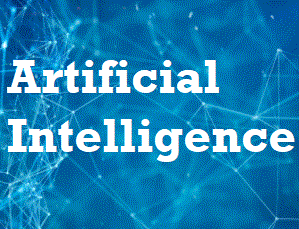Video analytics can be conducted in a variety of ways, depending on what kind of insights you’re looking to extract. They can be categorized into two main types: Quantitative analytics and qualitative analytics.
Quantitative analytics include the following:
- View Count: The number of times a video has been viewed.
- Watch Time: The total amount of time that viewers have spent watching your video.
- Audience Retention: The percentage of a video that the average viewer watched.
- Engagement: Likes, shares, comments, and other interactions that viewers have with your video.
- Click-Through Rate (CTR): The percentage of impressions that resulted in a click.
- Conversion Rate: The percentage of viewers that completed a desired action after watching a video, such as purchasing a product, signing up for a newsletter, or filling out a form.
- Traffic Source: Where viewers found your video, such as a search engine, social media, or a direct link.
- Device Type: The devices that viewers are using to watch your video, such as a mobile device, desktop computer, or smart TV.
Qualitative analytics include the following:
- Content Analysis: Examining the contents of the video itself, such as the topics, themes, tone, or sentiment expressed.
- Speaker Identification: Determining who is speaking in the video, particularly in interview or dialogue situations.
- Object Recognition: Identifying objects, settings, or activities in the video using computer vision.
- Scene Change Detection: Identifying when a scene changes in the video.
- Speech Recognition & Text Analysis: Transcribing spoken words into text and then analyzing that text for themes, sentiment, named entities, etc.
- Emotion Recognition: Identifying the emotions of the people appearing in the video, this can be done via analyzing facial expressions, tone of voice, and body language.
- Audience Feedback: Gathering and analyzing feedback from viewers about their perceptions, interpretations, and responses to the video.
Advanced techniques may use machine learning and artificial intelligence to analyze video content, such as deep learning for object recognition or natural language processing for speech recognition. These tools can provide even more detailed insights into the video content, the behavior of viewers, and the performance of the video.
All of these analytics can be used to improve video content, understand viewer behavior, tailor advertising strategies, and enhance overall viewer engagement. They are essential tools for anyone working with video content, from marketers to content creators to video platform providers.
Machine learning has revolutionized the field of video analytics by enabling deeper insights into the video content and the behavior of viewers. Here are a few machine learning algorithms and techniques that can be used for video analytics:
- Object Detection and Recognition: This involves identifying and recognizing various objects within video frames. Algorithms like Convolutional Neural Networks (CNNs), YOLO (You Only Look Once), Faster R-CNN, SSD (Single Shot MultiBox Detector), etc., are commonly used for this task.
- Activity Recognition: This technique analyzes the sequence of frames in a video to recognize various activities or actions happening in it. Recurrent Neural Networks (RNNs), especially Long Short-Term Memory Networks (LSTMs), are widely used for this task due to their ability to analyze sequential data.
- Scene Change Detection: This technique is used to identify when a scene changes in a video. Machine learning algorithms used for this include decision trees, clustering algorithms, or even deep learning models such as autoencoders which can identify large changes in the visual content from one frame to the next.
- Sentiment Analysis: This is used to identify the emotional context of a video by analyzing facial expressions, tone of voice, or even text overlays. For facial expression analysis, CNNs are widely used. For analyzing tone, speech recognition followed by sentiment analysis is done, which often involves natural language processing techniques.
- Speaker Identification: This involves identifying who is speaking in the video. Techniques such as Mel Frequency Cepstral Coefficients (MFCCs) followed by machine learning classifiers like Support Vector Machines (SVMs) or neural networks can be used.
- Video Summarization: This technique attempts to create a shorter version of the video while retaining the main points or highlights. LSTMs can be used for this purpose, due to their ability to process temporal sequences.
- Anomaly Detection: This involves identifying unusual or suspicious activity in a video, which is particularly useful for surveillance applications. Autoencoders, a type of neural network, are commonly used for anomaly detection due to their ability to learn representations of normal activity and thus identify deviations from the norm.
- Optical Character Recognition (OCR): This is used to identify and extract any text present in the video frames. CNNs and RNNs are commonly used for OCR.







